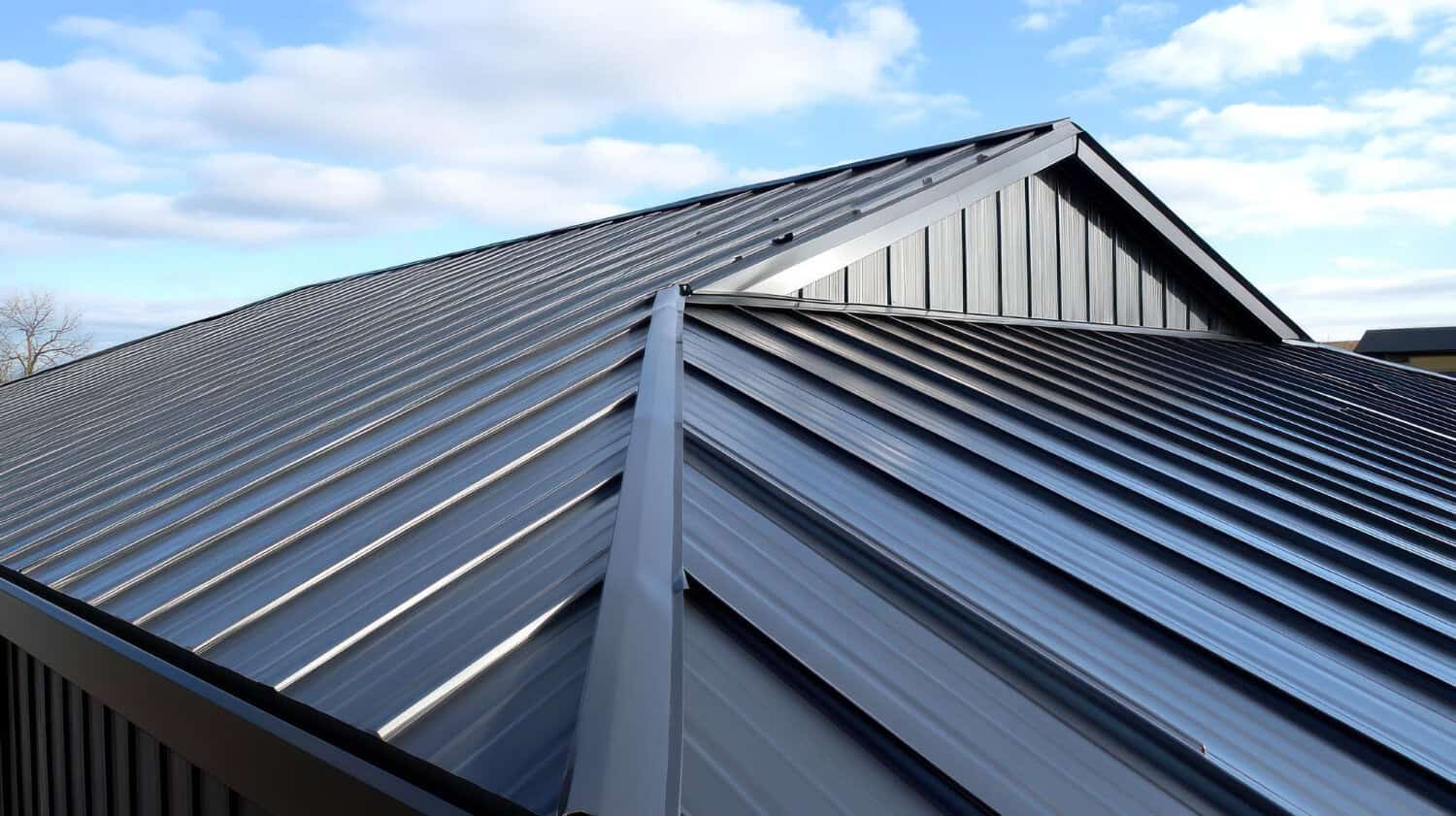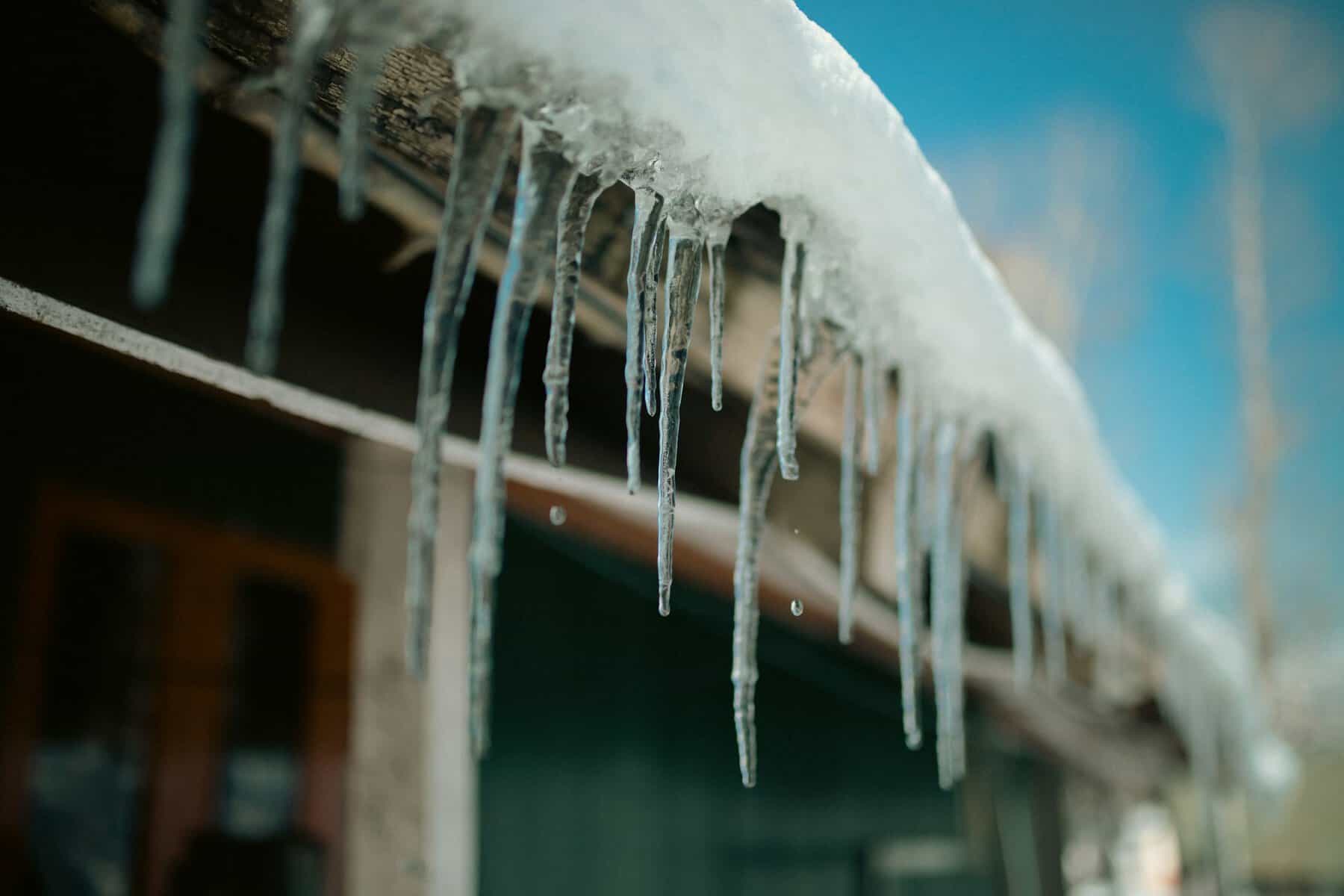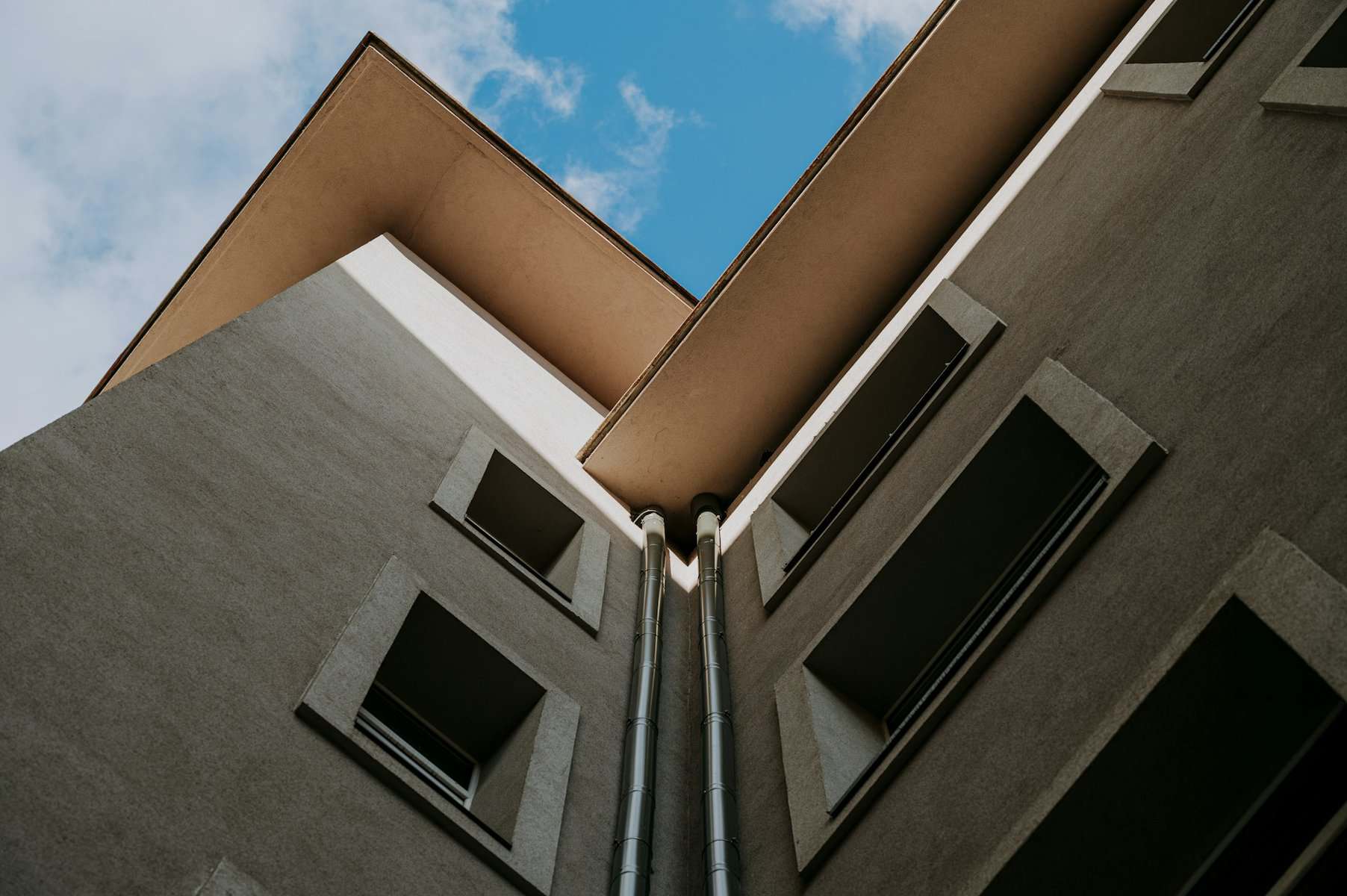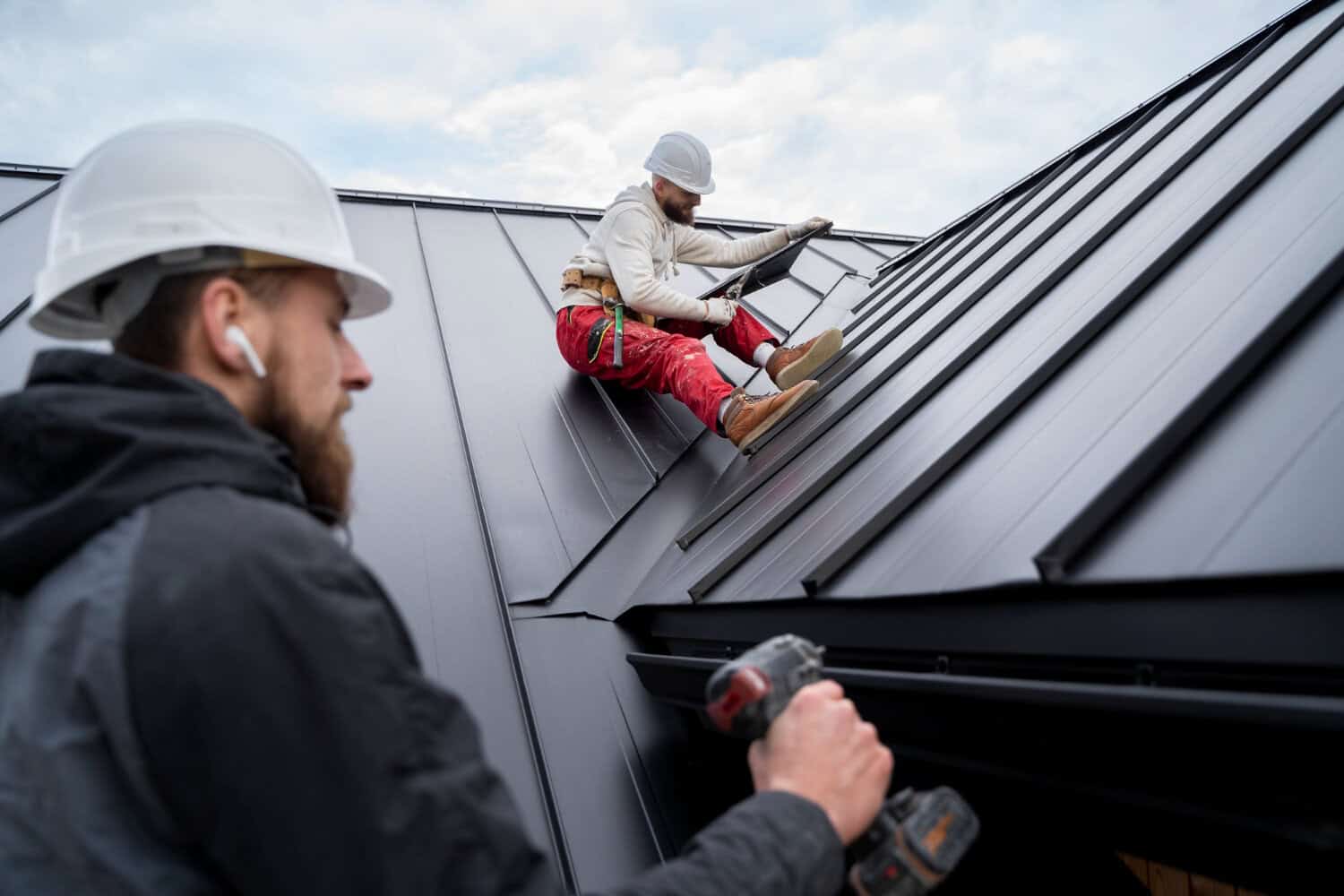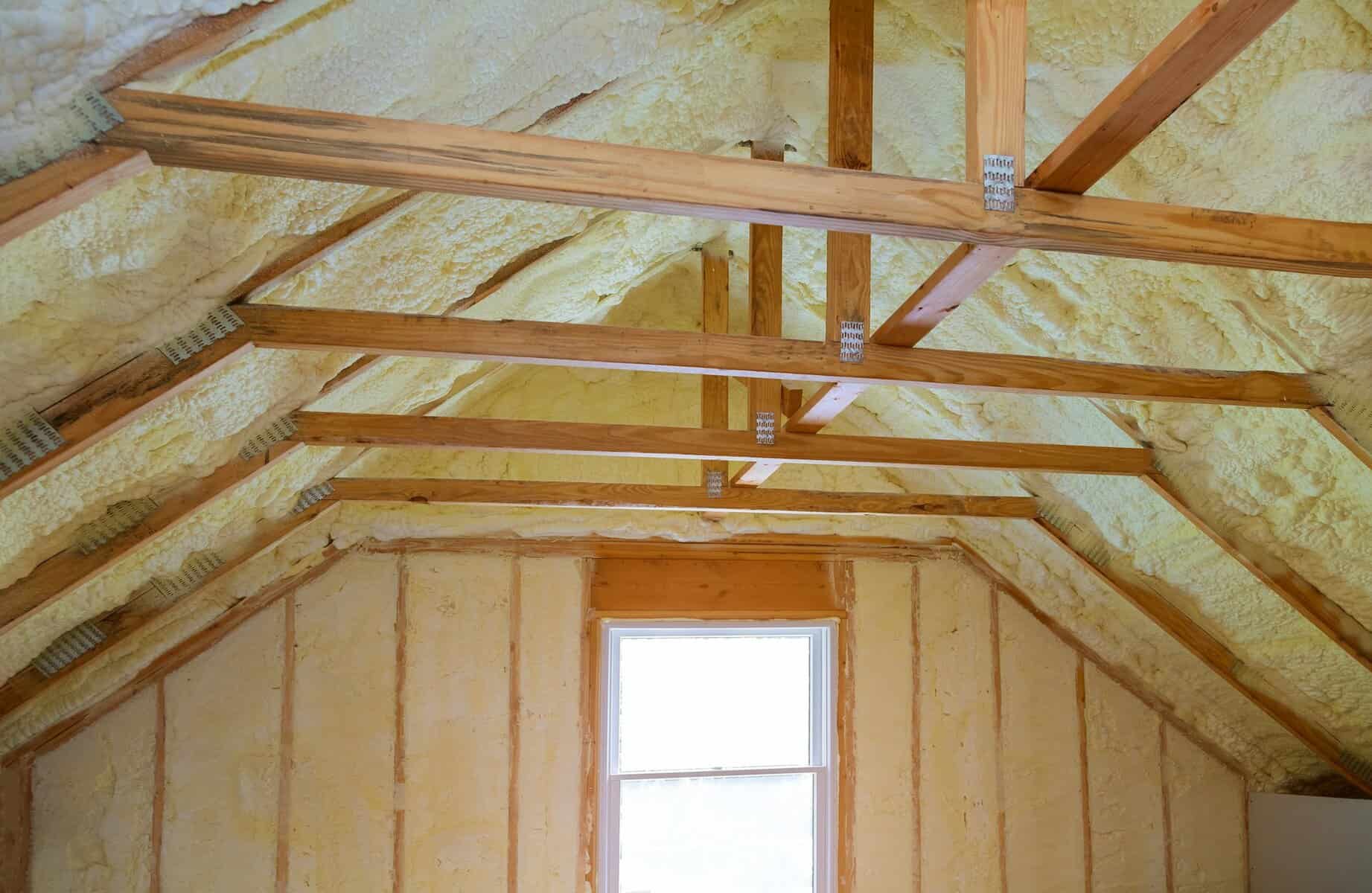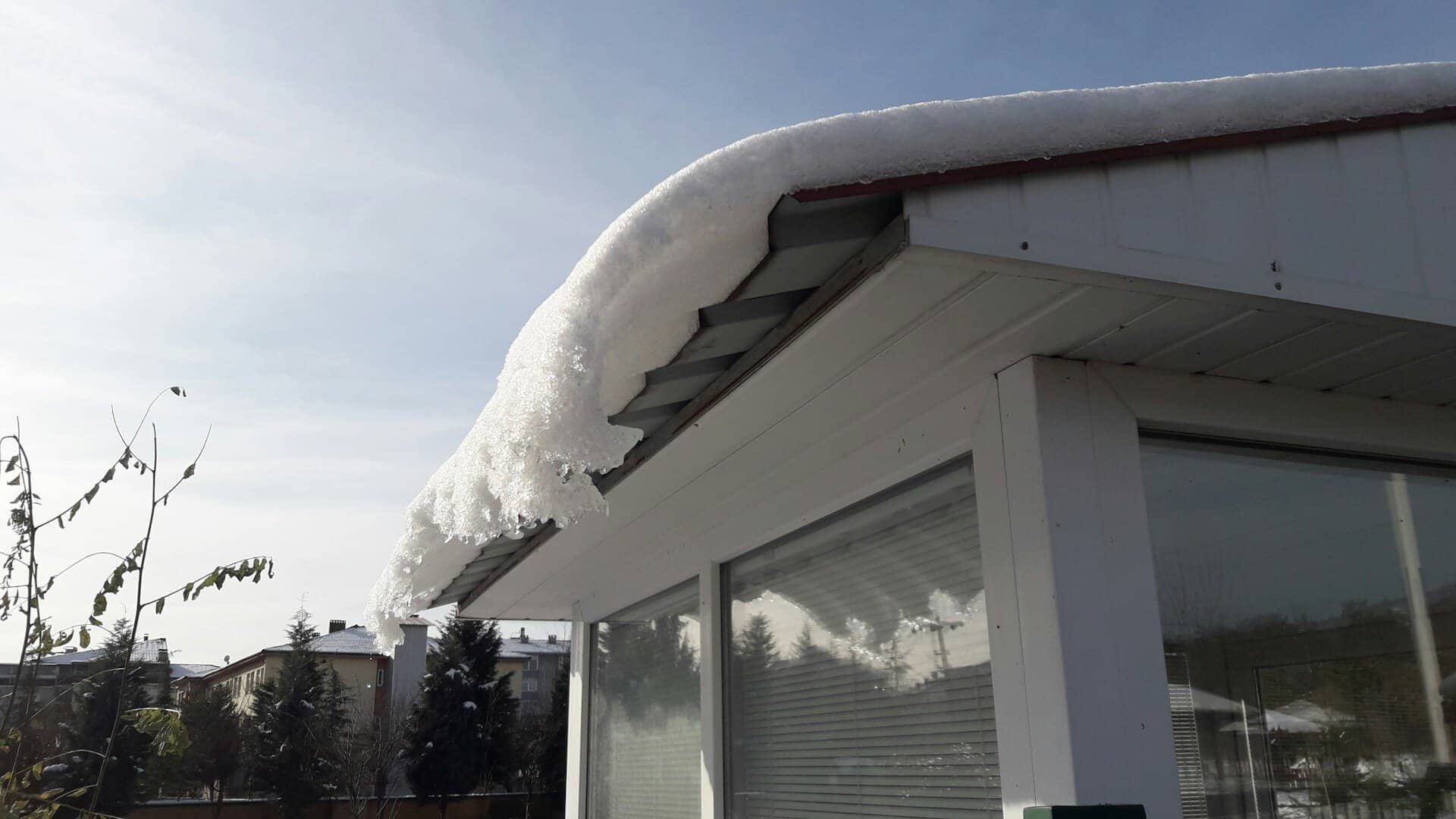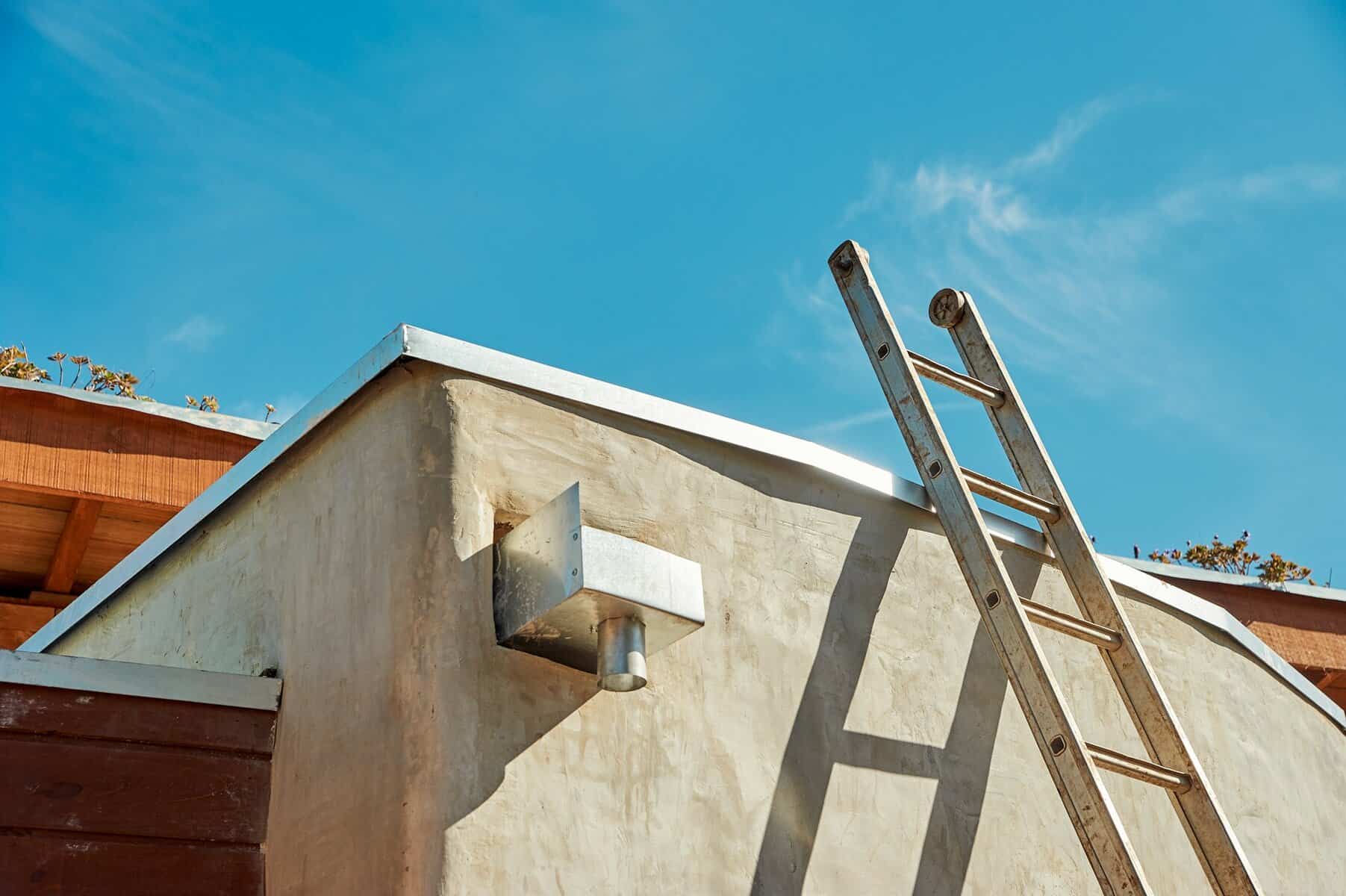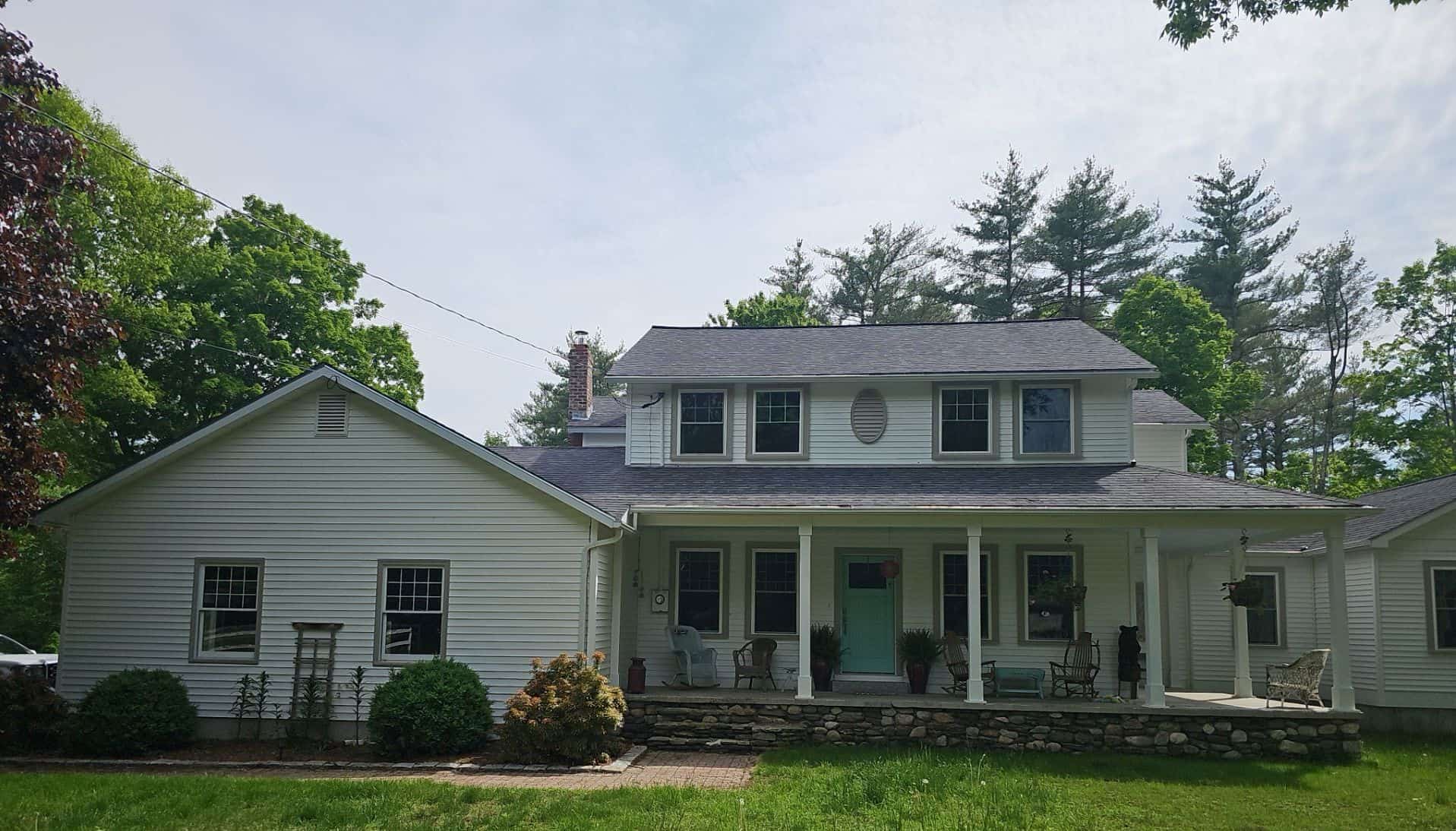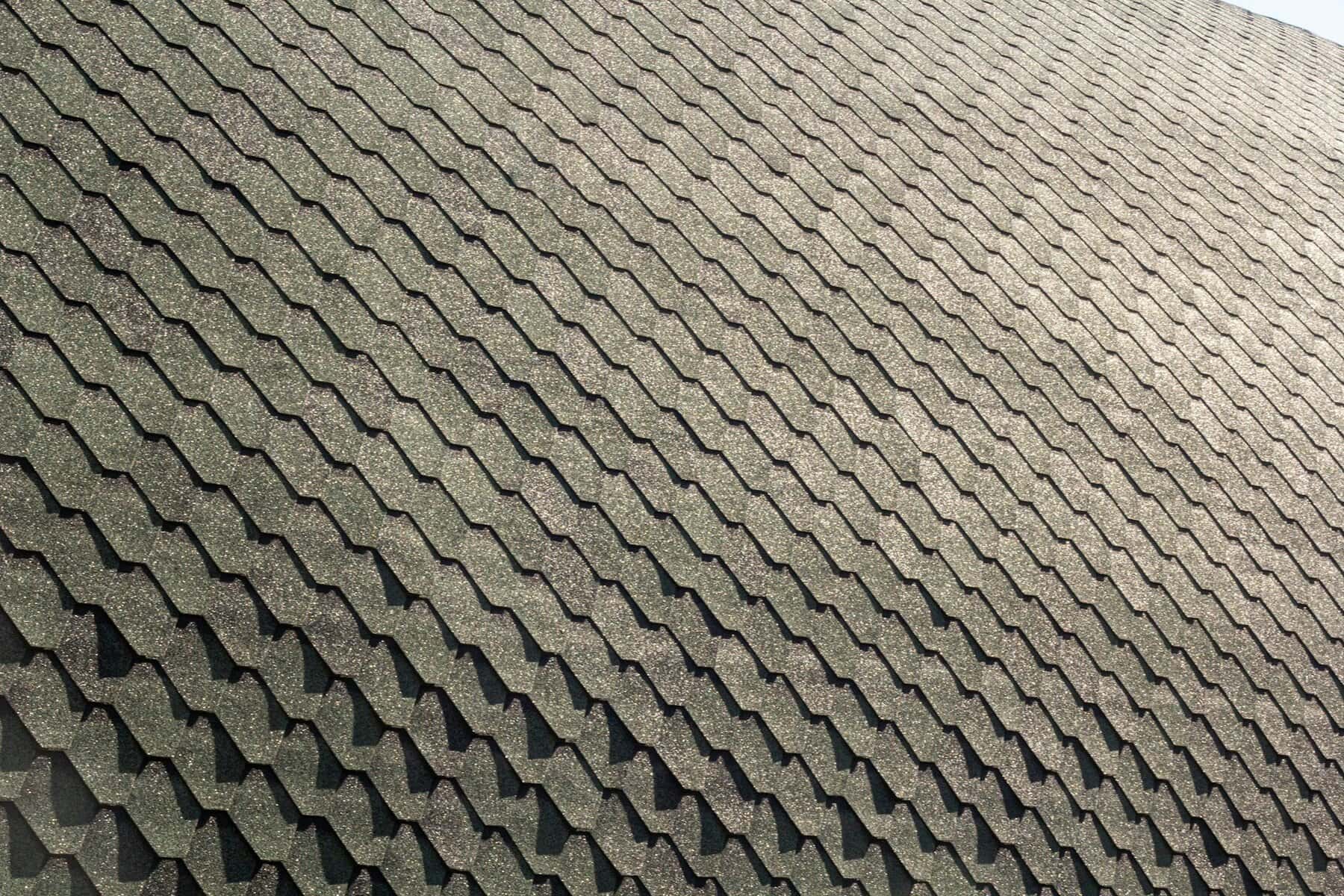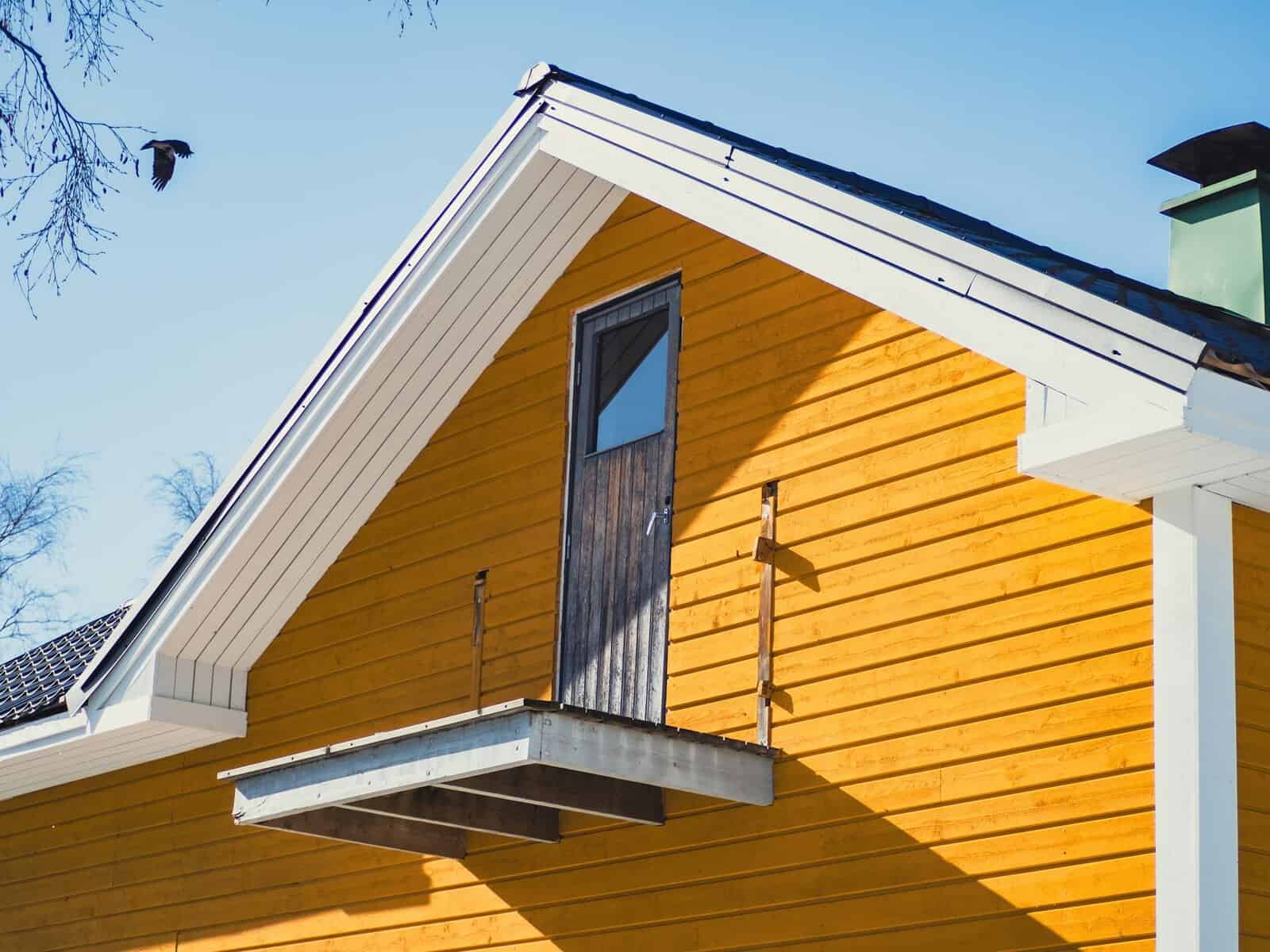If you’ve ever been woken up by strange creaking sounds from your roof during a cold night, you’re not alone. Many homeowners across New Hampshire and Southern Maine notice random popping or cracking noises coming from their metal roofs when winter sets in. The cold can really stir up unusual noises that weren’t there before.
As a New Hampshire roofer, we often get asked if these winter roof sounds are a problem. The short answer is sometimes. Metal roofs act differently than other types when the temperature drops, and those sounds are usually harmless. But noisy shifts can sometimes signal an issue that needs checking. Here’s a look at why metal roofs creak in winter, when it’s normal, and when it might be something more.
Why Metal Roofs React to Cold
Metal roof panels expand and contract with changes in temperature. When things heat up during the day, the metal expands. At night, as the temperature drops, it contracts. That back-and-forth movement can start pulling or rubbing against fasteners, brackets, or the wood underneath, and that’s where the noise comes from. The standing seam metal roofs we install use double lock seams and panels we custom fabricate on site, built to handle harsh New Hampshire winters while still allowing that natural movement.
Most of us in New England are used to quick temperature changes, especially in late December. It can be 40 degrees during the day and drop below 10 by nightfall. That sudden shift makes metal roofs contract fast, and that’s when creaking noises tend to get louder or more frequent.
There’s nothing wrong with metal contracting, we expect it to. But when your home’s roof hits these temperature swings regularly, the noise might become something you notice more often. In most cases, it settles after a few cold nights as the roof materials adjust to their tighter winter fit.
The way your metal roof responds to these cold snaps depends on a few other things, too. The type of metal used, the thickness of the panels, and even the color of your roof can influence how much expansion and contraction happens. For example, darker colors tend to absorb more heat during sunny winter days, causing a bit more expansion before the evening chill makes them contract suddenly again. Light-colored roofs may not warm up as much, so their movement is slightly less but still present.
How Roof Design and Installation Play a Role
Temperature is the main piece, and how the roof was built matters too. The size of the panels, the spacing of fasteners, the slope, all these choices shape how your roof behaves when it gets cold.
Here are a few things that can increase creaking:
• Very long metal sheets with fewer breaks between panels
• Fasteners that are over-tightened or loosely installed
• Gaps between the metal and the roof deck beneath
• Low-pitched roofs that trap more cold air or snow buildup
If the panels don’t have enough room to move slightly, or if they’re not attached properly, pressure builds. That pressure has to go somewhere, and it usually escapes as a loud pop in the middle of the night. Poor installation or shortcuts only make it worse. If the roof isn’t fixed to allow for thermal movement, the noise won’t go away with time. It may even lead to long-term wear in the wrong spots.
Different installation styles can also make a big difference. Roofs that use exposed fasteners, for instance, can experience more shifting in the cold because the fasteners are taking all the brunt of expansion and contraction. On the other hand, hidden fasteners, when installed with the proper spacing and flexibility, help minimize excess noise and movement. Attention to detail during installation is key for a quieter winter roof.
When Creaking May Signal a Bigger Problem
Most winter roof creaks are normal and pass quickly. But there are a few cases where the sounds point to something more serious happening beneath the surface.
Watch and listen for these signs that could mean there’s a bigger concern:
• Creaking sounds happen daily and keep getting louder over time
• You notice water inside after a snowstorm or freezing rain
• Panels appear to lift, shift, or move more than they should
• You can see screws starting to back out or move
Regular winter noise may not be exciting, but when these warning signs appear, it’s worth asking someone to take a closer look. Loose fasteners, gaps, or trapped moisture under moving parts can all lead to leaks down the line. Left alone, that can damage insulation, wood planks, or even ceilings inside your home.
If the creaking feels new this year or sounds sharper, chances are something underneath has changed. Age, wind, or long-term snow weight can loosen parts of the roof that used to sit quietly.
Sometimes an older roof that hasn’t made many sounds in the past can suddenly begin to protest once it has weathered enough cycles of freeze, thaw, and wind. Over time, screws and fasteners can loosen ever so slightly, letting tiny gaps form. These gaps can trap moisture or ice, which may start to work its way down through the layers of your roof without being obvious at first glance. If you notice a creak that is paired with other small changes, like shingles shifting or bits of insulation in your attic getting damp, don’t wait to act.
Winter Conditions Unique to New Hampshire and Southern Maine
Living in Northern New England brings a specific kind of winter. Our region doesn’t just get snow, it gets ice, freezing rain, coastal storms, and wild temperature swings that punish roofs differently.
Here’s how winter around New Hampshire and Southern Maine impacts metal roofs:
• Inland towns can see deep freezes at night, sometimes below zero. That really shrinks the metal quickly.
• Along the coast, daytime temperatures might thaw just enough to trick the roof into expanding before it shrinks again overnight. These freeze-thaw cycles are tough on fasteners and joints.
• Heavy snow piling on top for days can weigh down the panels, pushing metal tighter into fasteners. Once that weight melts or shifts, the release can make loud pops.
Whether you’re in the hills of western New Hampshire or closer to the ocean breeze in Southern Maine, these local shifts in weather are what make winter roof sounds feel unpredictable.
Wind-driven snow and sleet along the coast can pile unevenly against metal roofs, causing weight distribution to change from day to day. In ski country or mountainous areas, the deep nighttime cold is persistent and makes for regular cycles of contraction. Local salt in the air can even speed up minor corrosion, especially in seaside communities, leading to more pronounced creaks over time.
Every roof, depending on location and exposure, has its own way of reacting. Even houses on the same street can experience different sounds due to orientation, shade from nearby trees, or whether snow tends to drift across the ridge. That means what is perfectly normal for one home may sound like a warning sign for another, so it’s always helpful to be aware of changes from year to year.
What a Quieter Roof Could Mean for Long-Term Peace of Mind
Roof sounds in winter don’t always mean something’s broken, but they shouldn’t be ignored either. Getting familiar with what’s normal for your home helps spot when something starts to change.
A few smart steps can make a big difference:
• Roof design that allows metal to expand and contract without pressure
• Fasteners that are installed correctly and hold firmly throughout cold months
• Regular check-ups to catch shifting parts before they cause a problem
When your roof moves quietly and doesn’t surprise you with sudden sounds, you can worry less and enjoy your winter more. The better the design and upkeep, the better your roof handles the season.
That peace of mind doesn’t come from silence alone. It comes from knowing your roof is doing what it’s supposed to, adjusting with the weather but holding firm where it counts.
Being proactive about your roof’s condition after those cold snaps helps keep your home safe, cozy, and dry through many winters to come. Living with a metal roof in New Hampshire or Southern Maine can mean a few odd nighttime noises, but with the right installation and care, you can trust that every sound is just your roof doing its job through the cold and snow.
A noisy metal roof this winter could be a sign that it needs a closer look. Cold weather across New Hampshire and Southern Maine can push roofing materials to their limits, especially when fasteners or panels aren’t performing as they should. As a trusted New Hampshire roofer, we understand how local winters affect your roof and when unusual sounds suggest more than normal metal contraction. Let’s work together to keep your roof secure during the toughest months. Contact J. Carnes & Son Roofing when you’re ready to talk.

